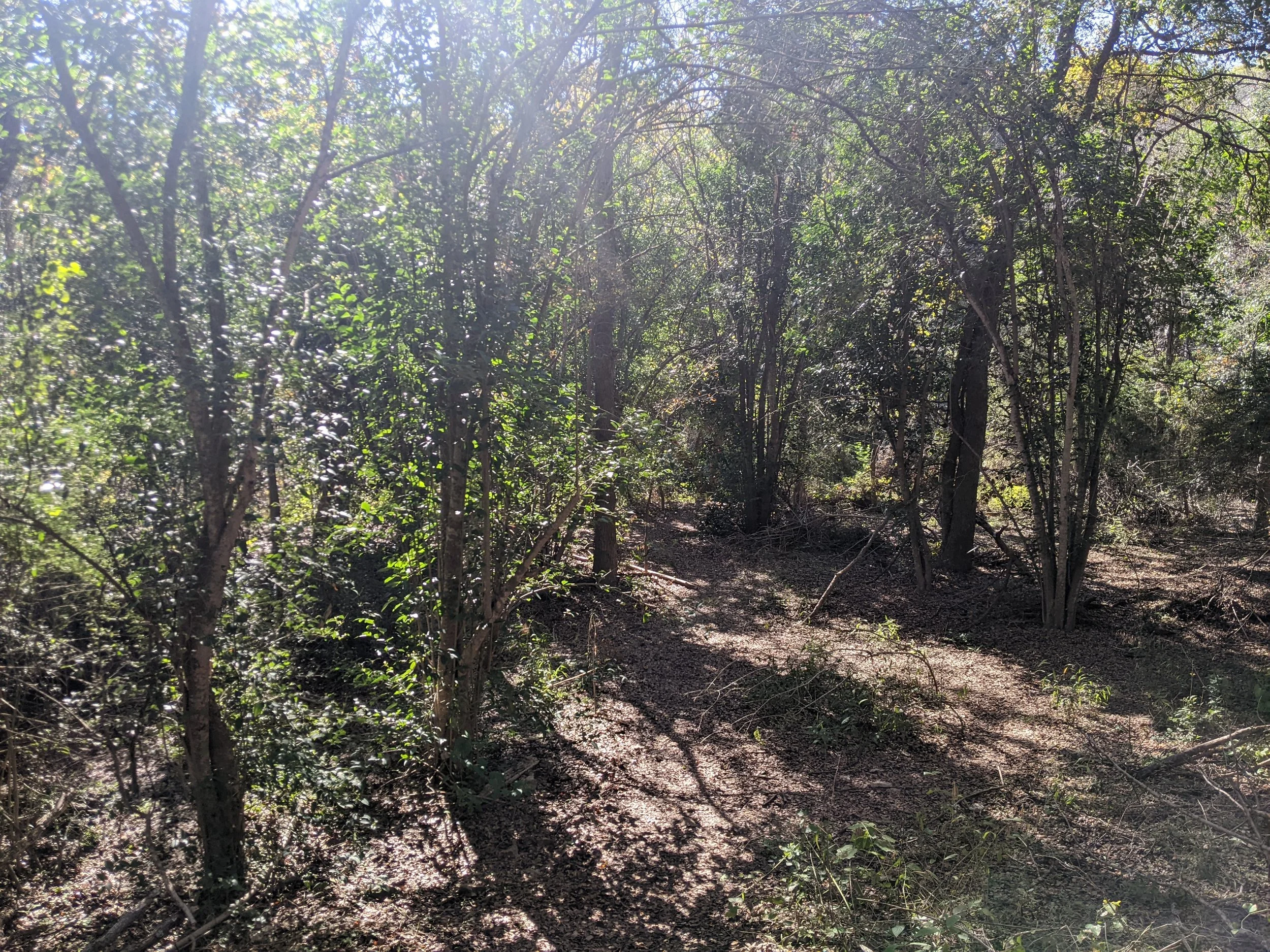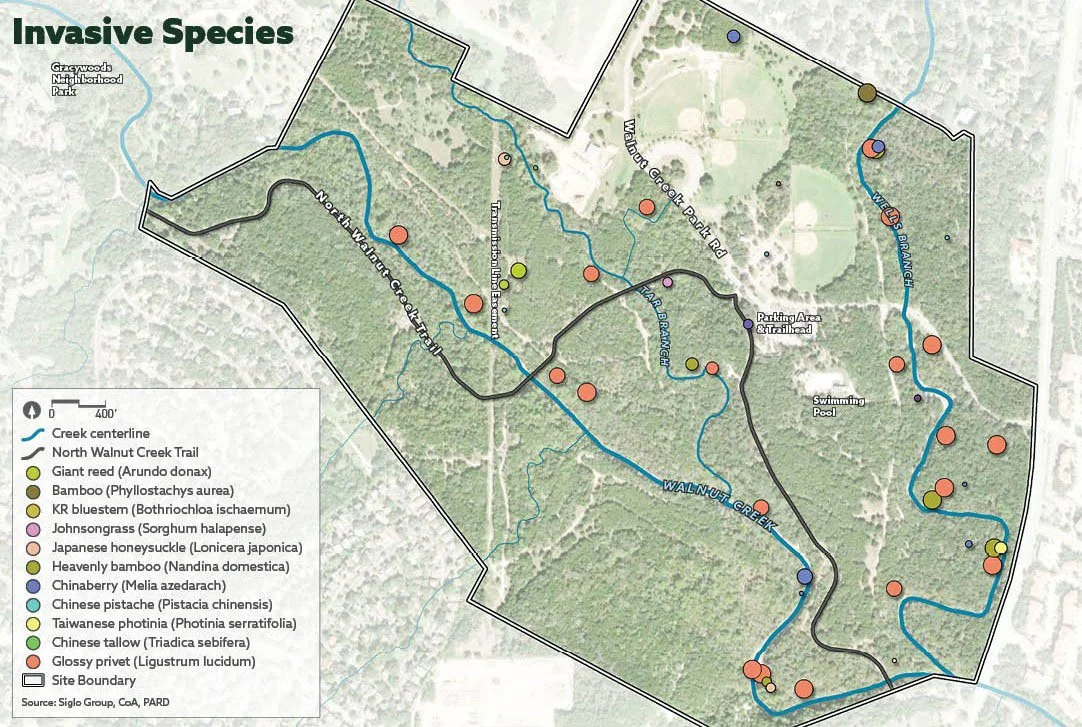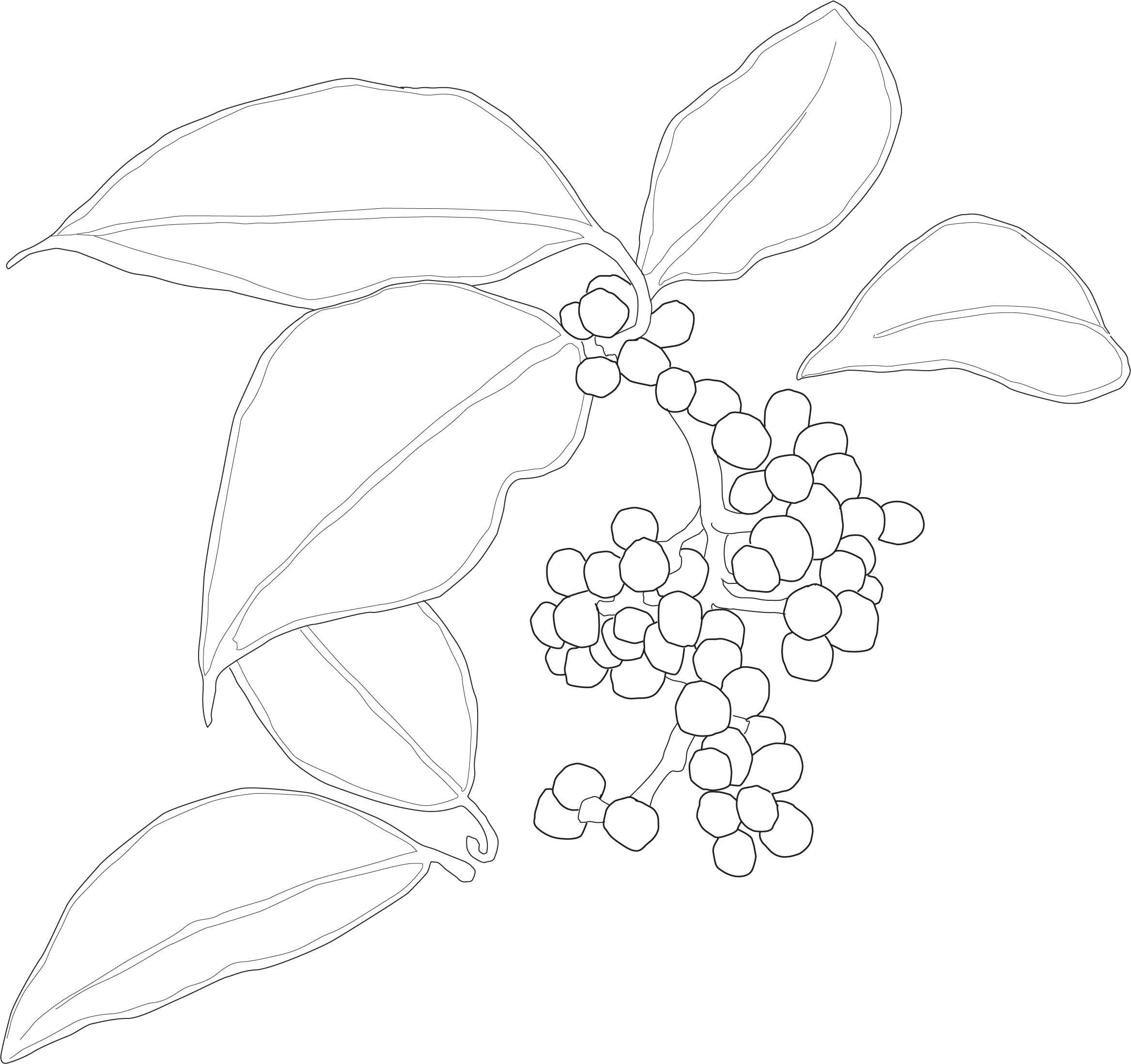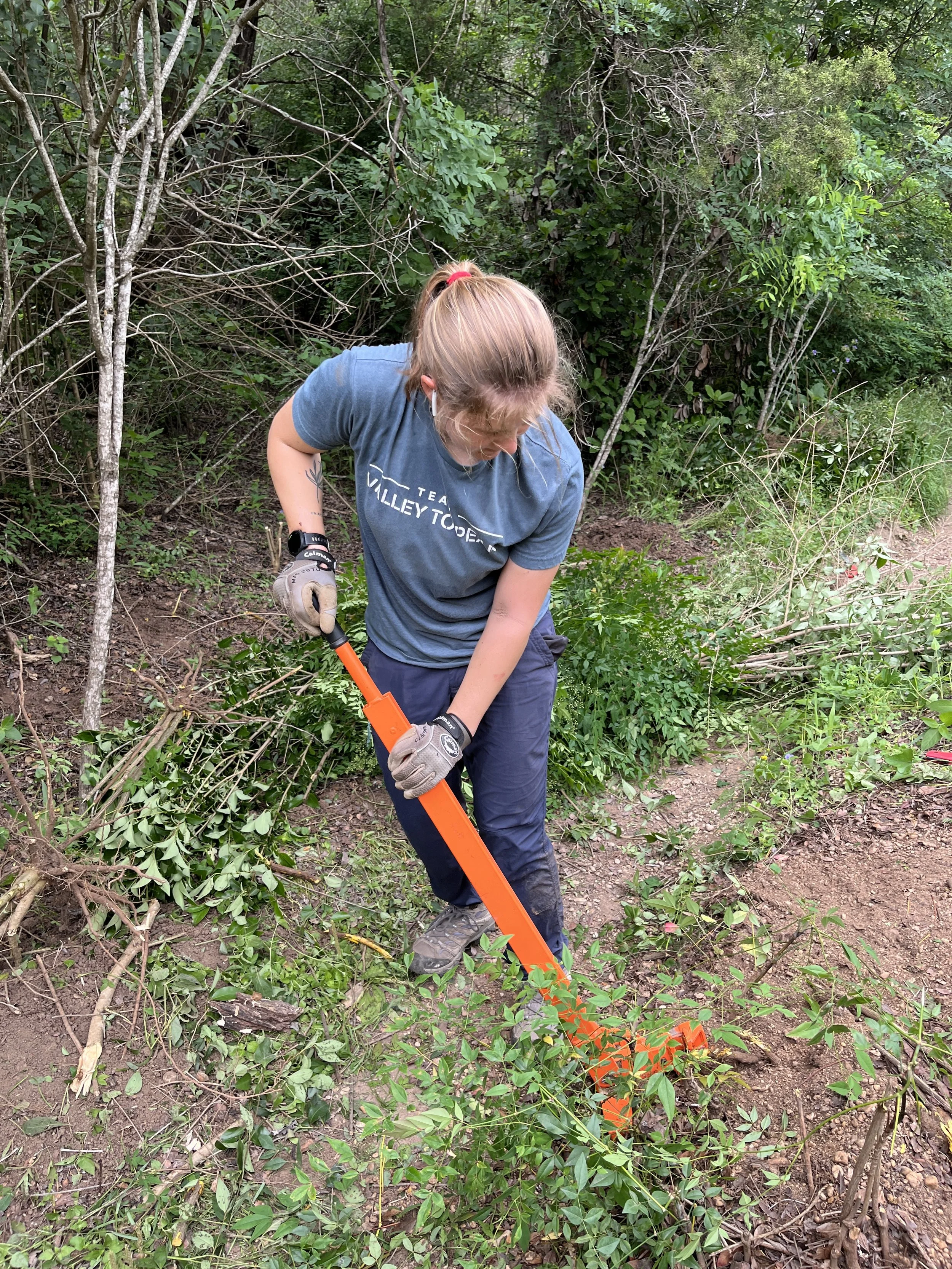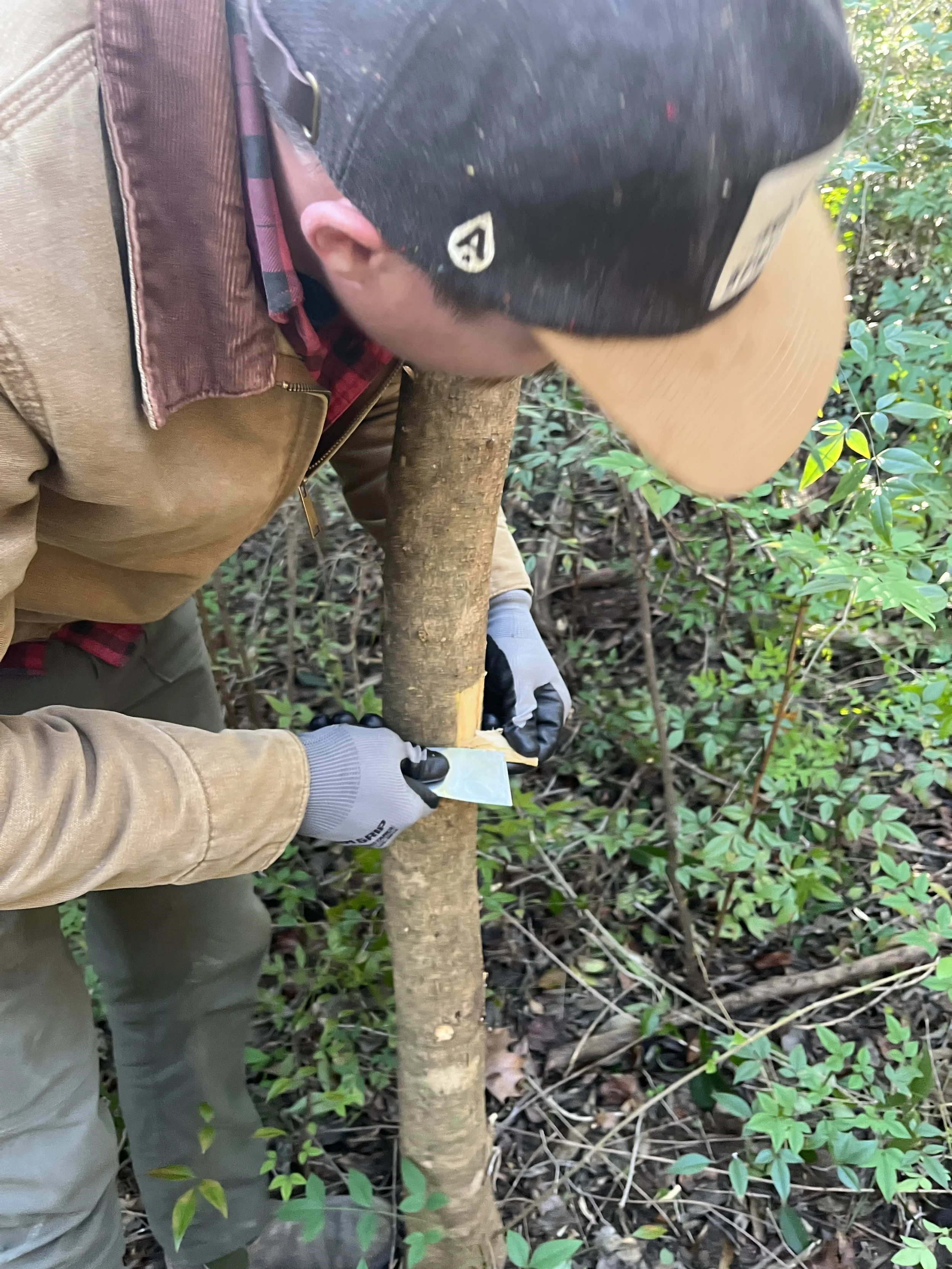Invasive Species Management
RESOURCE HUB (in process)
Invasive species pose a significant threat to biodiversity, ecosystem health, and the overall functionality of natural areas. They are species from another region or continent that thrive in their new setting due to a lack of predators, disease, and or competitors. By outcompeting native plants and disrupting ecosystems, invasive species can alter soil quality, reduce water availability, and diminish habitats for wildlife. Addressing this issue is critical for restoring and preserving the ecological balance of our parks and natural spaces.
Invasive species management requires a combination of accurate species identification, site assessment, monitoring, and strategic removal techniques. Each step plays a vital role in reducing the spread of invasives and fostering the recovery of native plant and animal communities. Successful management requires understanding species specific challenges, habitats, and environmental conditions.
The task of invasive species management is multifaceted and often requires a collaborative effort. Volunteers play an essential role in this work, contributing their time and energy to identify, remove, and monitor invasive species. Their efforts are critical in protecting natural areas from degradation and helping native ecosystems thrive.
This learning plan includes four modules designed to equip volunteers with the knowledge and skills needed for effective invasive species management. Each module provides detailed narratives, step-by-step instructions, quizzes, and references to trusted resources, such as the Walnut Creek Metropolitan Park Unified Stewardship Plan.
By completing these modules, volunteers will be empowered to:
* Safely and effectively participate in invasive species management activities.
* Identify and document priority species and their impacts.
* Apply species-specific removal techniques.
* Monitor and adapt efforts to support long-term ecosystem recovery.
Module 1: Introduction to Invasive Species Management
Invasive species are among the greatest threats to biodiversity, ecosystem health, and the sustainability of natural spaces. These species are characterized by their ability to outcompete native plants, disrupt ecological processes, and degrade soil and water quality. Left unmanaged, invasive species can lead to habitat loss for wildlife, increased erosion, and diminished recreational and aesthetic value of natural areas.
Volunteers play a vital role in invasive species management, contributing their time and energy to identifying, removing, and monitoring invasive plants. However, effective participation requires a foundational understanding of invasive species and adherence to field safety protocols. This module introduces these key concepts and prepares volunteers to work safely and effectively in the field.
By the end of this module, volunteers will:
Define invasive species and their impacts.
Understand the importance of managing these species to preserve natural ecosystems.
Learn the basics of field safety and prepare for successful participation in invasive species management activities.
Recommended Resources
Area dominated by Ligustrum at Walnut Creek Metro Park.
Foundations of Invasive Species Management:
Invasive species are non-native plants or animals that harm the environment, economy, or human health.
Examples in Central Texas: Glossy Privet (Ligustrum lucidum), Chinaberry (Melia azedarach), and Nandina (Nandina domestica).
Refer to detailed descriptions in the Walnut Creek Metropolitan Park Unified Stewardship Plan (pp. 2–4).
Recognize Their Impacts:
Ecological: Displace native plants, reduce wildlife habitat, and disrupt soil and water systems.
Economic: Increase management costs for parks and agricultural losses.
Social: Reduce recreational value and visual appeal of natural areas.
Understand Volunteer Roles:
Assist with identifying invasive species in the field.
Conduct safe and effective removal activities.
Document findings and observations to support long-term management.
Prepare for Field Safety:
Clothing: Wear long sleeves, gloves, sturdy shoes, and protective eyewear.
Essential Items: Bring water, sunscreen, insect repellant, and a first aid kit.
Hazard Awareness: Recognize risks like poison ivy, ticks, snakes, and uneven terrain.
Use Tools Safely:
Proper handling of weed wrenches, pruners, and hand saws.
Secure tools during transport and store them properly after use.
Weather Preparedness:
Check forecasts before fieldwork.
Dress for conditions and stay hydrated to avoid heat-related illnesses.
Practical Exercise
Visit a nearby park or open space. Observe the occurence of invasive species. What differences do you notice in areas dominated by invasive species and those dominated by native plants
Module 2: Site Assessment and Monitoring
Effective invasive species management begins with understanding the site. Site assessment involves observing the physical and ecological characteristics of an area to identify invasive species and their impacts. Monitoring builds on this by tracking changes over time, documenting progress, and detecting reinfestation or new species introductions. Together, these practices are the foundation of a long-term invasive species management plan.
Volunteers are essential in conducting site assessments and ongoing monitoring, as they provide critical data for guiding removal and restoration efforts. This module equips volunteers with the tools and techniques to assess sites and contribute to effective monitoring programs, ensuring their observations support data-driven decisions in invasive species management.
By the end of this module, volunteers will:
Understand how to conduct a site assessment, including identifying priority areas for action.
Learn methods for effective monitoring of invasive species and site conditions.
Utilize tools such as field logs, apps, and mapping to record and analyze observations.
Recommended Resources
Step-by-Step Instructions: Site Assessment and Monitoring
Define the Purpose of Site Assessment:
Site assessments identify invasive species, evaluate their impacts, and prioritize management efforts.
Refer to the Walnut Creek Metropolitan Park Unified Stewardship Plan (pp. 6–9) for examples of how site assessments guide action plans.
Observe Physical Characteristics:
Evaluate soil conditions, canopy cover, water availability, and topography.
Identify areas prone to erosion or water pooling, as these can exacerbate invasive growth.
Identify Invasive Species:
Use species ID tools like iNaturalist to confirm the presence of Glossy Privet, Chinaberry, Nandina, and other invasives listed in the Zilker Park Natural Resource Inventory (pp. 8–10).
Note plant density, reproductive stage (e.g., seedlings, mature plants), and proximity to native vegetation.
Prioritize Zones for Management:
Focus on areas where invasive species pose the greatest ecological threat or are easiest to remove.
Refer to priority-setting guidelines in the Butler Trail Urban Forestry and Natural Area Management Guidelines (pp. 12–15).
Document Findings:
Record observations in a field log, including date, location, species, and environmental conditions.
Create maps marking invasive species locations and density using tools.
Conduct Monitoring:
Monitor treated areas regularly for regrowth or reinfestation.
Document changes in species abundance, native plant recovery, and site conditions.
Use Technology for Accuracy:
Utilize GPS tools or mobile apps (e.g., iNaturalist, EDDMapS, Fulcrum) for mapping and data entry.
Refer to the Nature Steward Monitoring Guide for additional monitoring templates and best practices.
Practical Exercise
Visit a local site and conduct a basic site assessment.
* Identify invasive species present, their density, and associated site conditions.
* Record findings in a field log or map.
Monitor a previously managed site for regrowth or reinfestation.
* Document observations and compare with initial site conditions.
Module 3: Species Identification
Effective invasive species management begins with accurate species identification. Misidentification can lead to wasted efforts, unintended harm to native plants, and ineffective control strategies. This module provides volunteers with essential skills to recognize common invasive plants. By using line drawings and descriptions found here, volunteers will gain familiarity with key identifying traits of priority invasive species in Central Texas. This knowledge will help inform removal efforts, monitoring activities, and long-term habitat restoration.
Understanding invasive species identification requires careful observation of plant morphology, including leaf shape, bark texture, flower structure, and growth habits. Volunteers will also learn over time how to differentiate invasive species from similar-looking native plants to ensure conservation efforts target the correct species.
By the end of this module, volunteers will be able to:
Identify priority invasive plant species using visual characteristics.
Differentiate invasive plants from native look-alikes.
Utilize identification tools such as field guides, line drawings, and apps like iNaturalist.
Document observations systematically for future monitoring.
Recommended Resources
Related Volunteer Tasks
INVASIVE PLANT ID — drawings and information about some of the most common invasive species in the area.
Glossy Privet (Ligustrum lucidum)
Heavenly Bamboo (Nandina domestica)
Chinaberry (Melia azedarach)
Step-by-Step Guide to Identifying Invasive Species
1. Understand Key Identification Features
Each invasive species has unique characteristics that distinguish it from native plants. When identifying species, examine:
Leaves: Shape, edge structure (smooth, serrated, lobed), and arrangement (opposite, alternate, whorled).
Bark: Color, texture (smooth, rough, peeling, ridged).
Flowers: Number of petals, color, arrangement.
Fruit/Seed Pods: Shape, size, dispersal method.
Growth Habit: Shrub, tree, vine, grass, or herbaceous plant.
2. Utilize Guides
The Walnut Creek Unified Stewardship Plan provides detailed line drawings of invasive species. Use these to:
Compare against live plants in the field.
Note distinguishing features.
Cross-check with iNaturalist or printed guides for confirmation.
Field Guides & Line Drawings: Compare plant characteristics against trusted references.
iNaturalist & EDDMapS: Upload images for AI-assisted identification and community verification.
3. Recognize High-Priority Invasive Species
Based on Walnut Creek Metropolitan Park surveys, the most problematic invasive plants include:
Glossy Privet (Ligustrum lucidum)
Large evergreen shrub/tree.
Glossy, dark green leaves.
Clusters of small white flowers.
Dark blue to black berries.
Chinaberry (Melia azedarach)
Deciduous tree with fern-like leaves.
Bright yellow berries persist into winter.
Fragrant purple flowers.
Chinese Pistache (Pistacia chinensis)
Medium-sized tree with compound leaves.
Leaves turn bright red in fall.
Produces red-orange berries.
Heavenly Bamboo (Nandina domestica)
Shrub with bright red berries.
Compound leaves turn red in winter.
Toxic to birds if ingested.
Japanese Honeysuckle (Lonicera japonica)
Fast-growing vine.
Fragrant white/yellow flowers.
Opposite leaves, often semi-evergreen.
4. Document Findings
Record Observations: Note species name, location, growth stage, and density– can use monitoring form found in Walnut Creek Metro park Unified Management Plan or digital equivalent.
Take photos and log GPS coordinates of invasive species.
Upload findings to iNaturalist for expert verification.
5. Avoid Confusing Look-Alikes
Some native species resemble invasive species. Learn key differences:
Privet vs. Wax Myrtle (Morella cerifera): Wax myrtle has aromatic leaves, while privet does not.
Privet vs. Lindheimer’s silktassel (Garrya ovata ssp. lindheimeri): Silk tassel has leaves with a rounded tip, Ligustrum leaves come to a point.
Chinaberry vs. Western Soapberry (Sapindus saponaria): Soapberry has translucent yellow fruit, while Chinaberry’s are opaque.
Practical Exercise
* Visit a local park or green space and locate at least two invasive species.
* Use a field guide or iNaturalist to confirm species identification.
* Take close-up photos of leaves, bark, flowers, or berries.
* Compare findings with the Walnut Creek Unified Stewardship Plan line drawings.
* Record species name, location, and distinguishing traits in a field log.
Module 4: Invasive Species Removal Techniques
The removal of invasive species is a critical component of ecological restoration, ensuring that native plants and wildlife can thrive. If left unmanaged, invasive species can outcompete native vegetation, alter soil composition, and reduce biodiversity. Effective removal strategies target invasive plants at their source, preventing regrowth and limiting future spread.
This module focuses on weedwrenching and girdling, two primary methods for volunteer-based invasive species removal. Weedwrenching is an effective technique for removing smaller woody plants, such as Ligustrum Privet and Chinaberry. Girdling is used for larger trees, such as Ligustrum, Chinaberry, and Chinese Pistache, by cutting off their nutrient supply without disturbing the surrounding soil. Both methods have been successfully implemented in Walnut Creek Metropolitan Park, helping to restore native ecosystems.
Using guidance from the Walnut Creek Metropolitan Park Unified Stewardship Plan, this module will equip volunteers with best practices for executing these removal strategies in the field.
By the end of this module, volunteers will have the knowledge to:
Effectively use a weed wrench to remove small trees and shrubs.
Apply the girdling technique to kill larger invasive trees.
Properly dispose of removed vegetation to prevent reinfestation.
Monitor treated areas for regrowth and ecosystem recovery.
Recommended Resources
Related Volunteer Tasks
INVASIVE PLANT REMOVAL — an in the field how-to for plant removal
Weed wrenching
Girdling
Step-by-Step Guide to Invasive Species Removal
Weedwrenching (For Small Woody Plants)
Identify target species such as Glossy Privet, Nandina, and Chinaberry seedlings– as a rule of thumb, plants should be less than 2” diameter at the base.
Position the weed wrench at the base of the plant, ensuring a firm grip on the stem near the ground.
Apply leverage by pulling back on the handle, uprooting the plant completely.
Shake off excess soil from the root system to minimize disturbance.
Dispose of plant material properly by stacking uprooted plants off-trail or removing them from the site if seeds or berries are present.
Girdling (For Large Invasive Woody Plants)
Why Girdling Works: Girdling is an effective technique for killing large invasive woody plants because it disrupts the plant’s energy supply while keeping its water system functional. The phloem, the layer responsible for transporting sugars from the leaves to the roots, is removed in the girdling process. However, the xylem, which transports water from the roots to the leaves, is left intact. This imbalance means that the roots continue to function, pumping water upward, but receive no energy in return. Over time, the roots weaken and die, leading to the decline of the canopy, and eventually the decline and death of the plant.
Initial Cuts into Bark
Using a cutting tool (e.g., metal putty knife, 5-in-1 tool, or carpet knife), score the bark around the trunk twice, creating two parallel cuts 4–6 inches apart.
The depth of the cut should be 1/16 to 1/4 inch, depending on bark thickness.
Be careful not to cut into the sapwood (the lighter, harder wood underneath).
Peel Bark (and Phloem)
Use a flat-edged scraping tool (e.g., putty knife, 5-in-1 tool) to peel away the bark and phloem between the two cuts.
The bark should separate relatively easily from the sapwood.
Scrape Away Remaining Bark Layers
Using the same scraping tool, remove the remaining phloem (the wet, toothpick-like fibers between the bark and sapwood).
Stop when you reach the smooth, lighter-colored sapwood.
Remove Remaining Phloem and Kill Phloem Cells
Use a coarse plastic scrub pad and soapy water to scrub the exposed sapwood until all remaining fibrous material is gone.
Scrub again with 70% rubbing alcohol to kill any exposed phloem cells.
Practical Exercise
Identify an invasive species at your site that are suitable for weedwrenching or girdling.
With permission, Use the appropriate tool to remove the plant, following safety guidelines.
Glossary of Invasive Terms
Adaptive Management – A flexible, science-based approach to monitoring and adjusting restoration efforts to improve ecological outcomes.
Bark Texture – The surface characteristics of a tree’s bark, such as smooth, rough, furrowed, or peeling.
Baseline Data – The initial set of data collected before management efforts begin, used as a reference to measure ecological changes over time.
Biodiversity – The variety of plant and animal life in a specific habitat; high biodiversity is critical for a healthy ecosystem.
Biological Control – The use of natural predators, herbivores, or pathogens to control invasive species populations.
Cambium Layer – The living part of a tree's trunk responsible for transporting nutrients; targeted in girdling to disrupt growth.
Canopy – The uppermost layer of trees in a forest.
Canopy Cover – The layer of foliage formed by tree crowns or dense vegetation that affects light availability, moisture, and plant growth.
Chemical Control – The use of herbicides or pesticides to manage invasive species, often requiring strict guidelines to prevent damage to native plants.
Citizen Science – The involvement of volunteers in scientific data collection, such as reporting invasive species sightings using platforms like iNaturalist.
Compound Leaf – A leaf divided into multiple leaflets, such as those found on Chinaberry and Nandina.
Ecosystem Disruption – The alteration of natural processes due to external pressures like invasive species, habitat destruction, or climate change.
Ecological Restoration – The process of repairing and restoring ecosystems that have been degraded by invasive species or other disturbances.
EDDMapS – A mapping system for tracking invasive species across regions.
Engaging Volunteers – The process of recruiting and training community members to assist in invasive species management and restoration efforts.
Early Detection and Rapid Response (EDRR) – A strategy to identify and control invasive species before they spread and cause ecological harm.
Field Log – A written or digital record used to track site conditions, invasive species density, and removal progress over time.
GIS Mapping (Geographic Information System) – A technology used to create spatial maps of invasive species locations, monitoring progress over time.
Girdling – A tree removal method that involves cutting a ring around the bark and cambium layer, preventing nutrient transport and causing the tree to die over time.
Growth Habit – Describes how a plant grows—shrub, tree, vine, or herbaceous.
Habitat Degradation – The reduction in quality of a natural habitat due to invasive species, pollution, or human activity.
iNaturalist – A mobile app that helps users identify plants and animals using AI and expert input.
Invasive Species – Non-native species that aggressively spread and disrupt native ecosystems.
Keystone Species – A species that plays a crucial role in maintaining the structure of an ecosystem; their loss can lead to significant changes in habitat dynamics.
Lenticels – Small, raised pores on tree bark that assist in gas exchange and help identify tree species.
Leaf Arrangement – The pattern in which leaves grow on a stem (opposite, alternate, or whorled).
Leaf Margin – The edge of a leaf, which can be smooth, serrated, lobed, or wavy.
Leaf Venation – The pattern of veins in a leaf (parallel, pinnate, or palmate), used for species differentiation.
Line Drawings – Simplified black-and-white illustrations used for plant identification.
Manual Removal – The process of pulling or digging up invasive species by hand or with hand tools.
Mechanical Removal – The use of tools like saws, weed wrenches, and shovels to physically remove invasive plants without chemicals.
Microhabitat – A small-scale environment within an ecosystem, such as a shaded area under a tree or a wetland depression, that supports specific plant and animal life.
Monitoring – The ongoing process of observing and recording changes in a site over time to track invasive species presence, native species recovery, and habitat conditions.
Morphology – The study of an organism’s structure and form.
Monoculture – An area dominated by a single species, often caused by invasive plants outcompeting native vegetation.
Mulching – Applying organic material, such as wood chips or leaves, to suppress invasive regrowth and improve soil health.
Native Species – Plants and animals that naturally occur in an area and play a role in maintaining the local ecosystem.
Naturalized Species – A non-native species that coexists without harming native ecosystems, unlike invasive species which disrupt them.
Pathogens – Disease-causing organisms (such as fungi or bacteria) that can be introduced with invasive species and harm native plants.
Quadrat Sampling – A survey method that involves using a fixed square or rectangular plot to record species abundance and distribution.
Reinfestation – The re-establishment of invasive species in a previously treated area, often due to resprouting, seed dispersal, or soil disturbance.
Resprouting – The ability of certain plants to regrow after being cut, making repeated removal efforts necessary.
Root Sprouting – The process by which certain invasive species regenerate from root fragments left behind after cutting or partial removal.
Sapwood – The younger, outer layer of a tree’s wood that transports water from the roots to the leaves. It appears lighter in color than heartwood and is exposed during girdling.
Seed Bank – The collection of viable seeds present in the soil, including invasive species that can germinate after disturbance.
Seed Dispersal – The spreading of plant seeds through wind, water, animals, or human activity, contributing to invasive species spread.
Simple Leaf – A single, undivided leaf blade, as seen in Privet or Oak species.
Site Assessment – The process of evaluating physical and ecological conditions in a specific area to determine the presence and impact of invasive species.
Site Monitoring – The practice of regularly assessing a site after invasive species removal to check for regrowth and ensure native plant recovery.
Soil Disturbance – The disruption of soil structure during removal, which can trigger invasive regrowth or erosion if not properly managed.
Transect – A straight-line survey method used in site assessments to systematically record data on plant populations and habitat conditions.
Vectors of Spread – The mechanisms by which invasive species are introduced into new environments, including human trade, landscaping, and accidental transport.
Volunteer Stewardship – Community-based participation in environmental restoration, including monitoring, removal, and public education about invasive species.
Weed wrenching – A manual removal technique using a specialized tool to uproot small invasive trees and shrubs by leveraging force at the base.
Xylem – The vascular tissue in plants that transports water from roots to leaves; left intact in girdling to accelerate tree decline.

